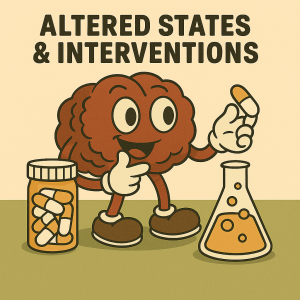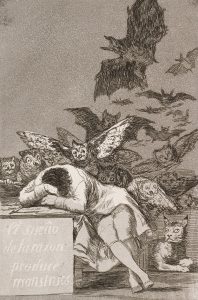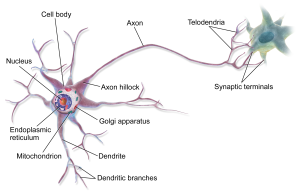Unit 2: Altered States & Interventions


Description: This unit explores how the brain’s chemistry & structure can be altered—intentionally or unintentionally—through drugs, disorders, sleep, & therapeutic interventions. We examine how psychoactive substances interact with neurotransmitter systems, how mental disorders manifest in the brain, & how sleep & memory processes reflect altered states of consciousness. The unit culminates in an exploration of motivation & biological drives, linking internal states to behavior.
Why This Unit Is Important: Understanding altered states & interventions is essential for psychology professionals across clinical, counseling, educational, & research domains. This unit equips students to:
- Interpret how medications & substances affect brain function & behavior.
- Recognize biological underpinnings of psychological disorders for accurate diagnosis & treatment.
- Understand sleep & memory mechanisms to support mental health & learning.
- Apply neuroscience principles to motivation & behavior regulation.
For counselors, this unit provides:
- Tools for discussing psychotropic medications & substance abuse with clients.
- Frameworks for understanding mental illness from a biological perspective.
- Insight into sleep & memory processes relevant to trauma & therapy.
- Biological grounding for addressing eating disorders & motivational challenges.
For other psychology professionals, this unit supports:
- Research into pharmacological & behavioral interventions.
- Educational strategies informed by sleep & memory neuroscience.
- Clinical decision-making based on biological markers & treatment efficacy.
- Health psychology applications for motivation & behavior change.
Unit Learning Objectives: By the end of this unit students will be able to…
- ULO1: Explain how psychoactive drugs interact with neurotransmitter systems & influence behavior. (CLO1, CLO2)
- ULO2: Analyze the neurobiological basis of psychological disorders & evaluate treatment approaches. (CLO1, CLO3, CLO4)
- ULO3: Describe sleep architecture, circadian rhythms, & brain mechanisms underlying sleep & dreaming. (CLO1, CLO2)
- ULO4: Evaluate neural mechanisms of learning & memory, including synaptic plasticity & memory systems. (CLO2, CLO3, CLO4)
- ULO5: Assess biological drives & motivational systems, including hunger, thirst, & temperature regulation. (CLO1, CLO3)
Media Attributions
- Trippin’ Buddy © Microsoft Copilot adapted by Jay C. Brown is licensed under a CC0 (Creative Commons Zero) license
- The Sleep of Reason Produces Monsters © Francisco Goya is licensed under a Public Domain license
- Picture Unit 2
